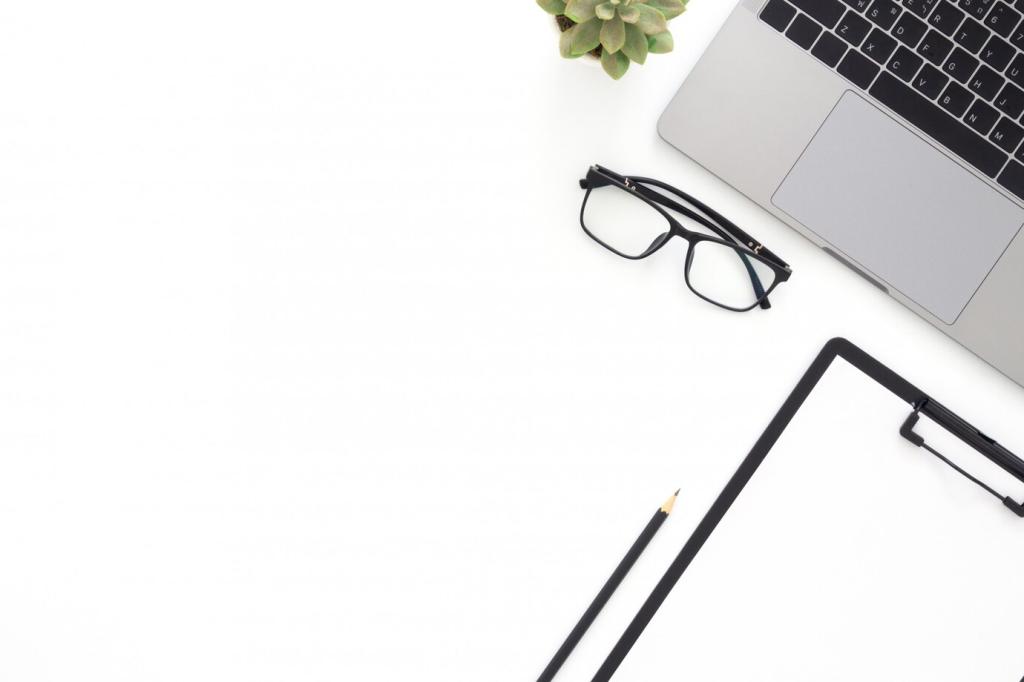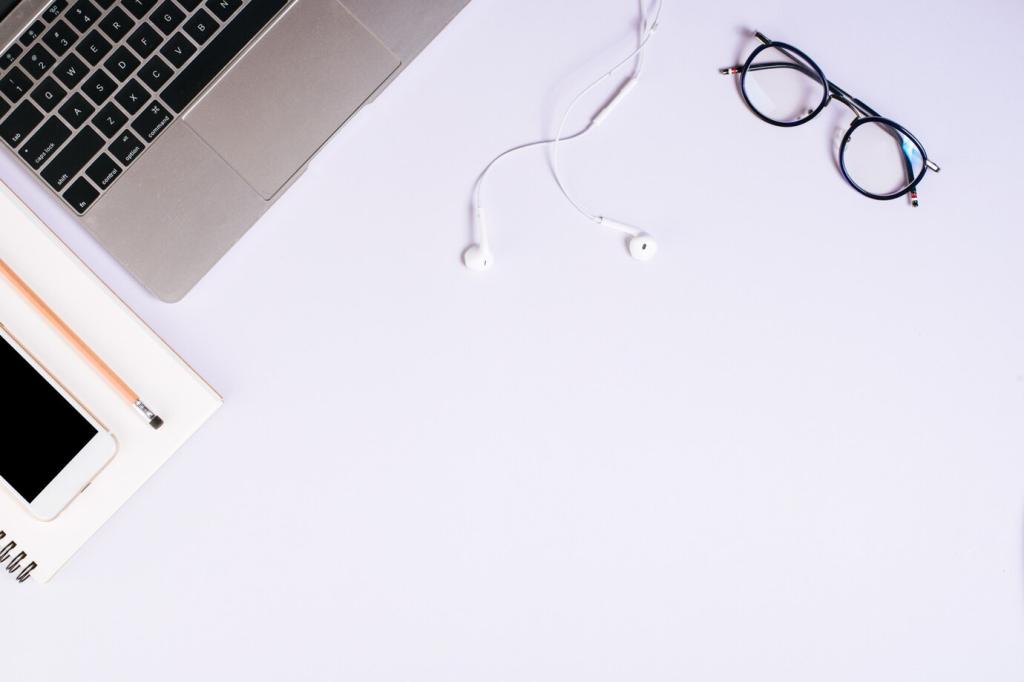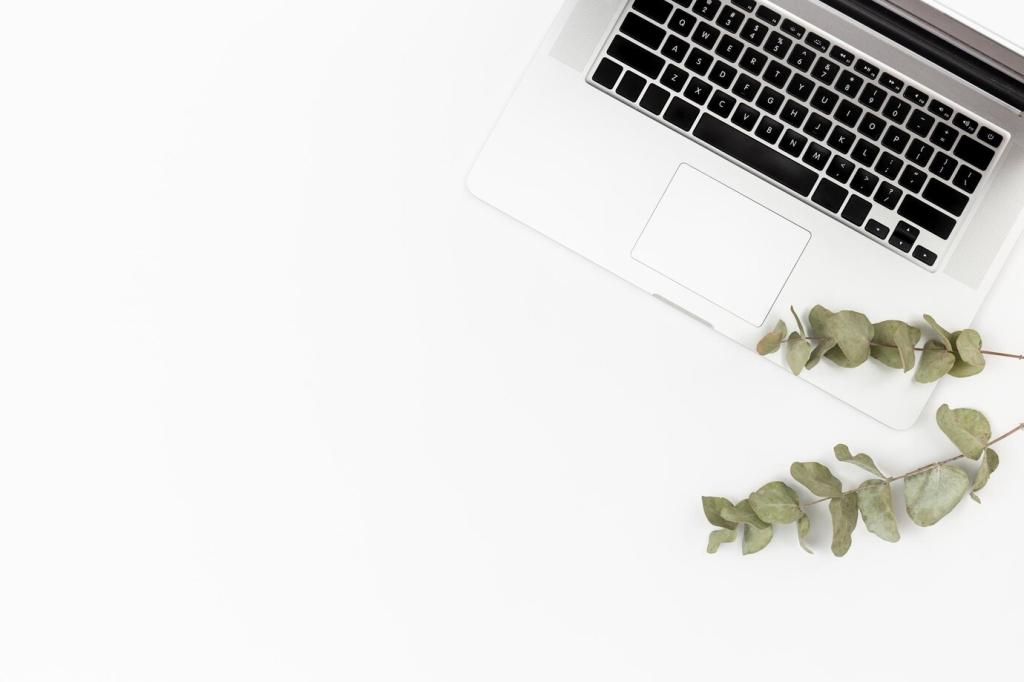Monochrome Minimalist Office Aesthetics
Chosen theme: Monochrome Minimalist Office Aesthetics. Welcome to a world where clarity greets you at the door, contrast sharpens your thinking, and every object earns its place. Picture the hush of matte black, the calm of soft gray, and the bright edge of white guiding your focus. Stay with us, share your thoughts, and subscribe for fresh stories and practical prompts as we refine the monochrome mindset together.


Foundations of a Monochrome Minimalist Workspace
Black anchors, white expands, and gray bridges the distance between them. Use black to signal importance, white to invite clarity, and gray to soften transitions. Together, these tones reduce distraction, giving your brain fewer variables to fight and more room for deep concentration.

The one-wall focus zone
Place your desk against a single, quiet wall to reduce peripheral noise. Keep the wall light, the desk darker, and your monitor centered. A controlled backdrop eliminates visual chatter and makes every task feel singular, not scattered across a chaotic horizon.

Flow lines that reduce friction
Carve a clean route from door to chair, chair to shelves, and shelves to printer or supplies. Flow lines eliminate micro-obstacles, saving seconds that accumulate into stress. In a monochrome plan, contrast marks pathways subtly without shouting directions at you all day long.
Furniture and Materials: Texture Replaces Color
Slim-profile desks, sturdy intentions
Choose a desk with a thin, confident top and robust understructure. A black or charcoal surface controls glare, while a light underside keeps the room airy. Cable passthroughs and integrated trays hide distractions so the desk reads as a single, collected line in space.
Ergonomics without visual noise
Pick a chair that disappears visually yet supports you relentlessly. Think graphite frames, breathable dark mesh, and simplified controls. The monochrome palette avoids fussy accents, letting ergonomics and posture speak louder than color, while the silhouette remains calm and unobtrusive all day.
Storage that disappears into the wall
Use flush cabinets in white or soft gray that sit level with the wall plane. Handleless doors, push-latch hardware, and consistent reveals keep lines clean. When storage vanishes visually, your focus stays on work, not the visual noise of half-open drawers and varied finishes.


Light, Shadow, and Contrast
Position your desk perpendicular to windows to avoid screen glare and maximize peripheral brightness. Add a focused task lamp in black to frame the workspace. A soft, neutral ambient source evens the scene so each lighting layer contributes without competing for attention.
Light, Shadow, and Contrast
Select matte paints, etched glass, and non-gloss desk surfaces to prevent harsh reflections. Glossy finishes can scatter light and distract your eyes. A low-sheen environment strengthens contrast where you want it—on text and tools—while keeping everything else comfortably quiet.

Digital Monochrome: Your Screen as Part of the Room
Set system themes to dark or light monochrome, choose a neutral wallpaper, and disable animated icons. With color removed, your eyes track contrast and structure, not novelty. The result is a quieter cognitive landscape that supports longer, more satisfying stretches of work.
Digital Monochrome: Your Screen as Part of the Room
Use black and white calendar labels for time blocks and gray for flexible tasks. The palette clarifies priorities without emotional signaling from bright colors. You’ll spot commitments faster and protect deep work windows with confident, visually unambiguous boundaries.
Join our mailing list
